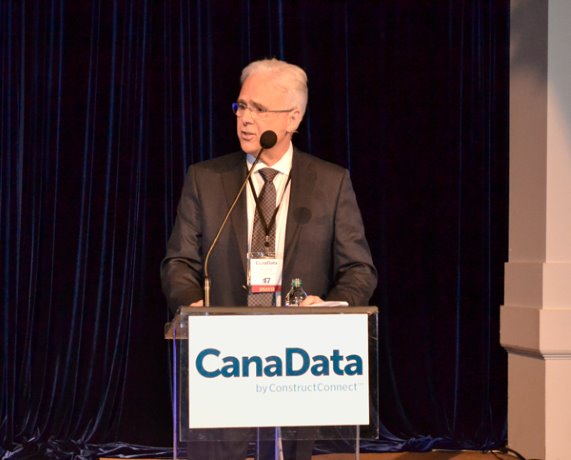While fully automated vehicles seem like a futuristic concept, they could become reality in the not too distant future, but more planning is needed before these vehicles hit the road in Ontario.
In his presentation, the Challenges for Construction in a World of Unprecedented Technological Change at the CanaData East construction industry forecast conference held in Toronto Sept. 21, Bern Grush of GrushNiles Strategic explained the technology for automated vehicles is far ahead of the infrastructure, regulations and societal changes needed to get to a point where most travel is in automated vehicles, either owned or shared.
"Cars will be ready long before the city is," said Grush, adding city readiness could lag by three to eight years. "The technology is ready without a driver (but with an attendant) now, but is anyone in Canada planning what is needed to put this in play? Not that I’m aware of."
Grush talked about the findings of a report he worked on for the Residential and Civil Construction Alliance of Ontario.
"Uncertainty about autonomous vehicles is a growing concern for urban transportation planners and this matter is a concern for planning for infrastructure and construction as well," Grush said.
"We are not sure what infrastructure we need. This is completely undetermined. This is like you are sure you are going to the prom tomorrow but right now you don’t have a date, no tux and no ride…Until we have some indication of where this could go in reality, some evidence, how can we say what we should construct?"
The construction industry is in a tough spot, he noted.
"The planners aren’t able to plan yet the kinds of changes that will be needed in the next five to 15 years because we don’t understand well enough how fast these fleets will come into play and especially we don’t understand how large they will be, what portion of the population will be using them, as opposed to them buying their own vehicles," said Grush. "I think we need to work closely with agencies such as Metrolinx to understand what will be happening and how we can cause what we want to happen to happen. If we don’t do that it’s very difficult to plan and very difficult to invest in infrastructure if we don’t know what that infrastructure is going to be used for in 50 or 100 years."
Fully automated vehicles will not solve all the current problems on city roads and highways, Grush noted.
"If personal vehicles dominate as they do now we might have lower fatality rates but we’ll still have automotive dominance in our cities congestion, sprawl, parking," said Grush. "If sharing dominates, things will be very different. If you gave planners a city where 80 per cent of all trips are in taxis and shuttles versus a city where 80 per cent of all trips are taken in personally owned automated sedans and SUVs, you would get two very different cities."
The first era involves having robotaxis or shuttles that hold six to 12 people that are fully automated, but they can only travel in small constrained areas such as three to four kilometre loops.
The second phase is more flexible and automated vehicles will be able to be called on from a cellphone. They might operate on a four or five kilometre radius around transit stations and provide last mile service for passengers. Through the eras, the system would expand until it is able to take people everywhere.
But Grush said there is also an issue around how automated vehicles will impact transit.
"The first users in this first period will be passengers who are currently relying on transit and taxis," said Grush. "Anyone who came here today on transit, in a taxi or an Uber, you are the first customers of these robotaxis. If you drove here today in your family car you are not the first customer of these robotaxis most likely.
"This will decimate traditional transit and I expect traditional municipal systems will be replaced by the beginning of the second era."
But it will take a bit longer for car owners to completely abandon their vehicles, Grush pointed out.
"We are unlikely to arrive at a system where no one owns a vehicle," he said. "That’s the ideal that we’re looking for but that is very difficult to achieve."
He also said there has to be some incentive for people to use shared systems.
"Shared use has to be better than owning," explained Grush. "Each person who decides to abandon their personal vehicle needs to know that these robo vehicles are actually going to get better and not just that they’re cheaper, because just cheaper is not enough."











Recent Comments
comments for this post are closed